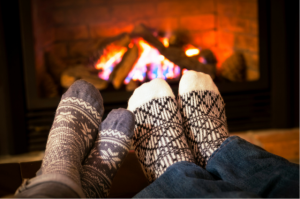
Winter is here; the days grow shorter and colder, and it is time to pull out your warm jumpers, woolly socks and snug shoes. “Winter” can be felt in every part of your body, and especially your feet. To ensure you enjoy the colder weather pain free, learn about the common conditions that can occur in the cooler weather.
- Exercise – Winter sees many people keep fit (and warm) by participating in team/ organised sports and running triathlons and marathons. This is also the time podiatrists see a peak on cold weather injuries such heel spurs (plantar fasciitis), shin splints and “runner’s knee” (Illiotibial syndrome). Cold muscles and connective tissue have less elasticity and are more prone to injury in the colder weather.
- Children – During the cooler months, heel pain/ soreness is common in children aged 8-12 years that participate in winter sports. While many may dismiss this “growing pains”, heel pain in children can become so severe that the child limps to avoid pressure on the heel. This injury usually develops due to the bones growing faster than tendons, affecting flexibility, joint motion and coordination.
- Ingrown Toenails – Getting back into closed-in shoes for some can be a painful experience; those dreaded ingrown toenails! Even the pressure from warmer, heavier blankets on the bed might be enough to irritate your ingrown toenail! A podiatrist is a convenient (and fast) way to manage your ingrown nails to ensure you can sleep well at night.
- Callouses and Corns – Callous is a buildup of hard skin on your feet caused by pressure/ friction on your feet. In sites of continuous increased pressure, corns can develop. A corn is hard skin that is concentrated with a core deep into the skin. To avoid this problem, wear proper fitting shoes (not too tight!) to avoid excessive pressure on your feet. A visit to your podiatrist can have those corns removed painlessly.
- Dry/ Cracking Skin – During winter, skin loses moisture and can peel and/ or crack. In severe cases, the skin may crack open and start to bleed in sites where the skin is under high tension (such as your heels). Manage these uncomfortable conditions with regular applications of moisturizing cream, gentle pumice stone/ loofah use, and remedial treatment from your podiatrist.
- Tinea – Fungal infections are common at this time of year, and may look similar to dry skin in the early stages before progressing to scaling, redness, itching and even open wounds on the bottom of feet! Some people even need to check between their toes as it is a common hiding spot for some fungal infections due to the warm environment it craves. Tea tree oil applications can assist, and seek assistance from your podiatrist if the condition continues.
These are a few “cold weather” conditions that can be managed with regular checking and some tips/ tricks (and knowing when to call in the reinforcements)! By checking your feet through the winter months, you will ensure your feet are nice and healthy throughout the cold days.